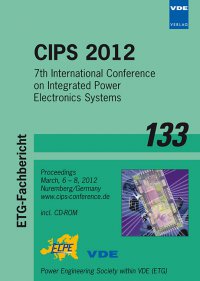Calculating Transient Thermal Load of ECUs in Engine Compartment by Applying Simplified Physical Models
Conference: CIPS 2012 - 7th International Conference on Integrated Power Electronics Systems
03/06/2012 - 03/08/2012 at Nuremberg, Germany
Proceedings: CIPS 2012
Pages: 6Language: englishTyp: PDF
Personal VDE Members are entitled to a 10% discount on this title
Authors:
Decker, M.; Riepl, T. (Continental Automotive GmbH, Regensburg, Germany)
Abstract:
The reliability of electrical components is an essential factor for vehicle lifetime considerations. Failure mechanisms of these components are accelerated by temperature levels and temperature cycles. Detailed knowledge about the transient temperature behavior and generated heat are key factors in designing both reliable and cost-optimized electrical components. Engine operation and vehicle driving conditions have a significant impact on temperature and air velocity distribution, which are relevant for heat transfer and power dissipation in under hood mounted electronic devices. Finite element analysis (FEA) in engineering has grown in importance and is established as state of the art. FEA models are rather complex and focus on specific engineering categories but lack in handling system interactions. Detailed FEA analyses are characterized by a degree of freedoms (DOF) in range of several million. Simplified physical models are however characterized by significantly lower number of DOF in range of 10 to 1000 depending level off interaction. The approach described in this paper work will show how to generate and calibrate simplified physical models used in thermal calculation to derive detailed knowledge about temperature exposure of electronic devices in vehicles.


